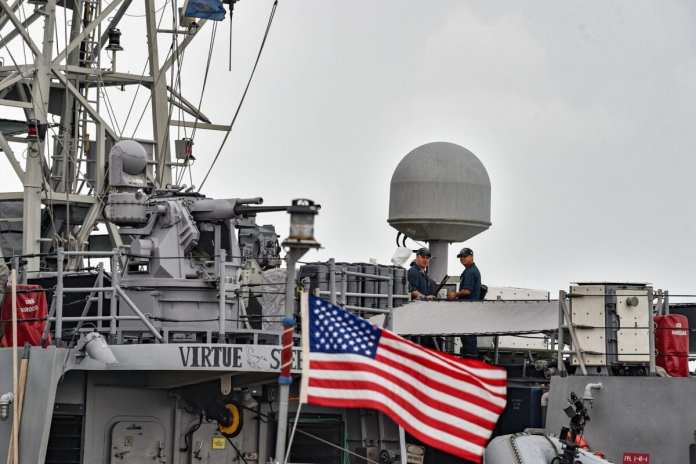The Nour-3 space satellite was blasted off into orbit aboard a Qased carrier rocket on Wednesday. The Islamic Revolutionary Guard Corps (IRGC) will be using its Nour-3 satellite to collect military intelligence, IRGC Chief Hossein Salami has confirmed.
Previous satellites in the series were met with mockery and derision from Pentagon officials, but the ridicule soon stopped after Iran showed off the spacecraft’s impressive capabilities.

Separately, IRGC Aerospace Force Commander Amir-Ali Hajizadeh said that the Nour-3 would be involved in signal collection, and revealed that by the end of the current Iranian calendar year (in March of 2024), Iran has plans to launch two more satellites.
With the progress we are making in this direction, in the not-so-distant future, we will have a constellation of satellites in orbit.
Iranian Minister of Communications and Information Technology Issa Zarepour announced earlier in the day that the Nour-3 had been successfully launched into orbit, some 450 km above the Earth’s surface.

Iran is one of just a handful of countries in the world with the capability to develop, produce, launch and independently operate satellites, and has arguably the best-developed space-based capabilities in the Muslim World.
Iran’s space endeavors are split between a civilian and military program, with the latter operated by the IRGC. The Nour-3’s successful launch follows the deployment in space of the Nour-2 in 2022, and the Nour-1 in 2020.
The latest satellite in the series weighs some seven kilograms more than its predecessor, and according to IRGC chief Salami, features superior onboard imaging technology allowing for better quality and resolution snapshots of the Earth from space.

US officials have offered a bipolar assessment of Iran’s space program, vacillating between criticism of Tehran’s rocket and satellite launches based on claims that they could be used to further the development of the Middle Eastern nation’s missile program, and mockery of the Islamic Republic’s space capabilities compared Washington’s
In 2020, shortly after the launch of the first Nour-series satellite, then-US Chief of Space Operations Jay Raymond derided the spacecraft as a mere tumbling webcam in space that would be unlikely to provide Iran with any usable intelligence.
Raymond was showed up by the Iranians months later when the IRGC released detailed images snapped by the Nour-1 of Al-Udeid Air Base – the Qatar-based home of US Central Command and the largest US military base in the Middle East.
The Nour-2 followed up in 2022 by sending back a detailed panoramic image centered on the headquarters of the US Fifth Fleet in Manama, Bahrain.
So Iran is now receiving previously unprecedented capabilities to monitor US military activities in its backyard in crisp detail with its Nour series spacecraft.
Sputnik / ABC Flash Point News 2023.













































Iran can not be stopped developing its own technology in order to escape the Zionist trap set for the Middle East and the rest of the world?
Quite correct AT.